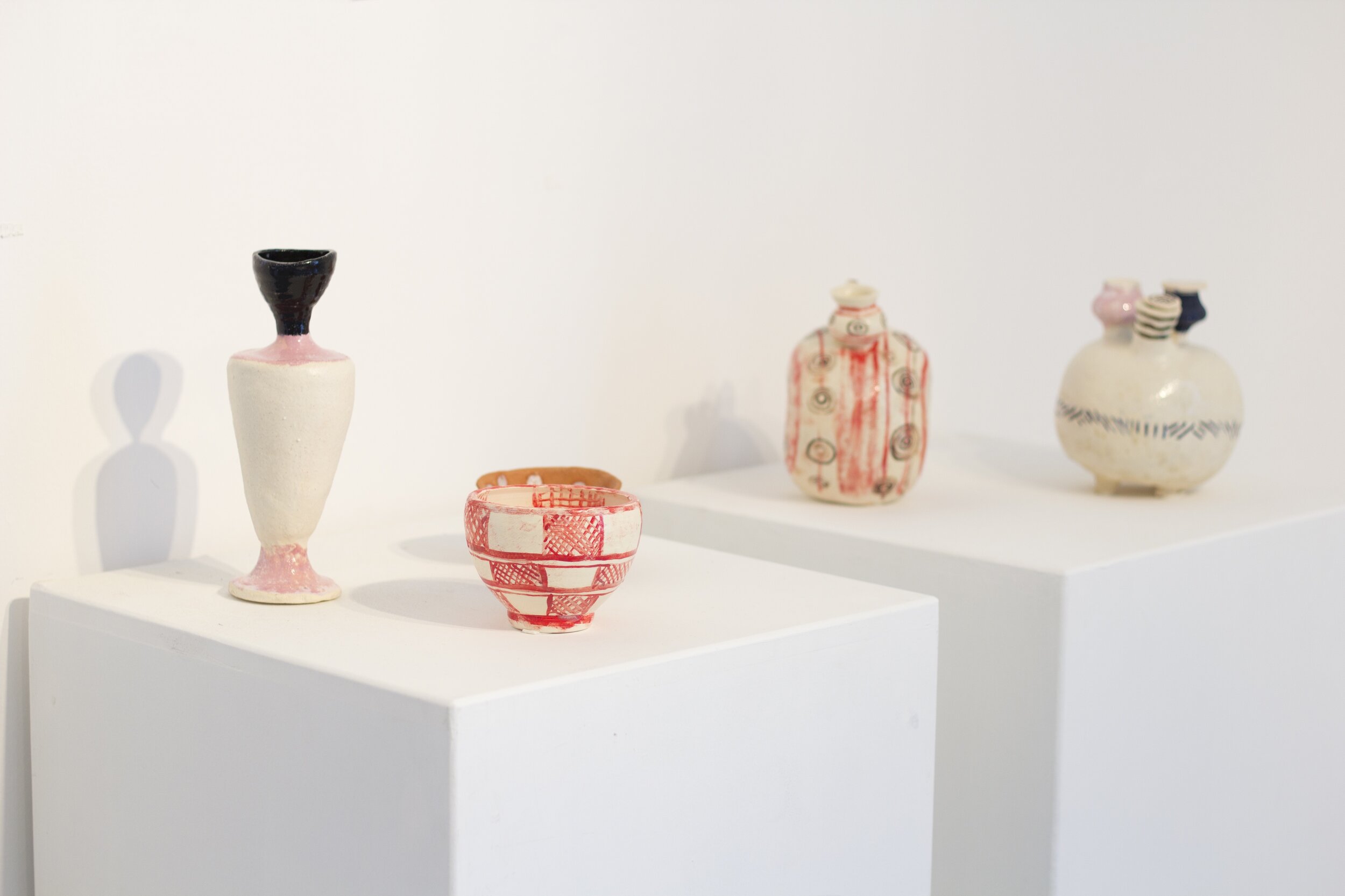ANGELA BRENNAN
Installation photograph of Angela Brennan’s works from the exhibition Travellers from Australia, exhibited at the Pailia Ilektriki, Ktima Pafos, Cyprus, 2-15 October, as part of the official program of the Pafos2017 European Capital of Culture. Photo: Shelley Webster, 2017.
Artist Statement
When it was explained to me that the ancient Hellenistic-Roman theatre of Nea Pafos took 21 years to uncover, in my mind I immediately covered it up again, trying to imagine the labour and thrill involved in unearthing such a wonder! This beautiful stepped, curving structure is the centrepiece of the archaeological precinct by the sea; it sets the scene for ancient detail—the little pieces of mosaic wedged in between and slivers of pigment clinging on (just) to vertical surfaces. These fragments meander further afield, both physically and metaphorically, to linger longer and re-appear in diverse contexts, from Cyprus to my studio.
Visiting surrounding sites in Pafos and nearby with Diana Wood Conroy, I was made aware of the importance of floors both as an archaeological measure of period and style and also as a tableaux for the creation of Roman and early Christian mosaics. Overriding an iconographic reading is the aesthetic choices the artists were making, for example the distribution of blue across the Triumph of Dionysus mosaic from the Roman Villa of Theseus at Pafos, or the organization of maritime motifs on mosaics at Agios Georgios Pegeias. What is salient for me is not so much what emerges from the narrative but rather how the artist was thinking at the time. I get a glimpse of how they experienced making.
Up on the hill, behind the theatre, may or may not be Aphrodite’s temple. For me she definitely presides there and from this aspect can see her birthplace just up the road at Petra tou Romiou. I come across Aphrodite again in the Pafos Archaeology Museum; her shipwrecked self is fragile but sturdy, positioned in front of amphorae. It’s amazing to reflect how many instantiations there are of her throughout art history, but this particular sculpture is special perhaps because she has been born again, twice coming out of the sea!
In the first gallery, I am bidden to the ‘newness’ of four Chalcolithic pots from settlements near Lemba. The vessels are unencumbered by handles, lids, or feet, content with a slip-painted red diagonal and lattice-like lines, a pattern that looks as recent as contemporary abstraction or as ancient as an Eastern Arnhem Land cave painting. There is a sense that the motif crosses between artistic eras, travelling back and forth. The sensation is one of temporal instability: that pattern transits from contemporary painting to end up on the flasks from 4500 years ago.
My artistic practice is primarily concerned with painting. However the work presented in this exhibition features drawings, ceramics and a textile. The ceramic forms are composite interpretations based on early Cypriot pottery, various floor mosaics from the area inspire the drawings, and the textile is a tribute to Aphrodite. My experience as artist-in-residence in October 2016, observing Dr Craig Barker and his team from the University of Sydney excavate at Nea Pafos, amplifies my feeling that artistic form and its complexities never settles in one instance but instead draws its vitality from being in constant circulation.
Angela Brennan May 2017
Biography
Angela Brennan’s practice combines a range of media including painting, drawing and ceramics, incorporating both abstraction and figuration, informed by classical and contemporary sources. She has exhibited extensively throughout Australia and overseas since the late 1980s, completing studio residencies in Spain, France and China, including 2915, the British School at Rome residency. Angela Brennan studied Fine Art at RMIT University and received a Bachelor of Arts from the University of Melbourne, majoring in Philosophy. Most recently her work was exhibited in Painting. More Painting at Australian Centre for Contemporary Art, Melbourne in Shut up and Paint at the National Gallery of Victoria, Melbourne. Her work is represented in major public and private collections throughout Australia and overseas, including the National Gallery of Australia and the World Bank Collection, New York. Angela lives and works in Melbourne.
Instagram: @angebre1




